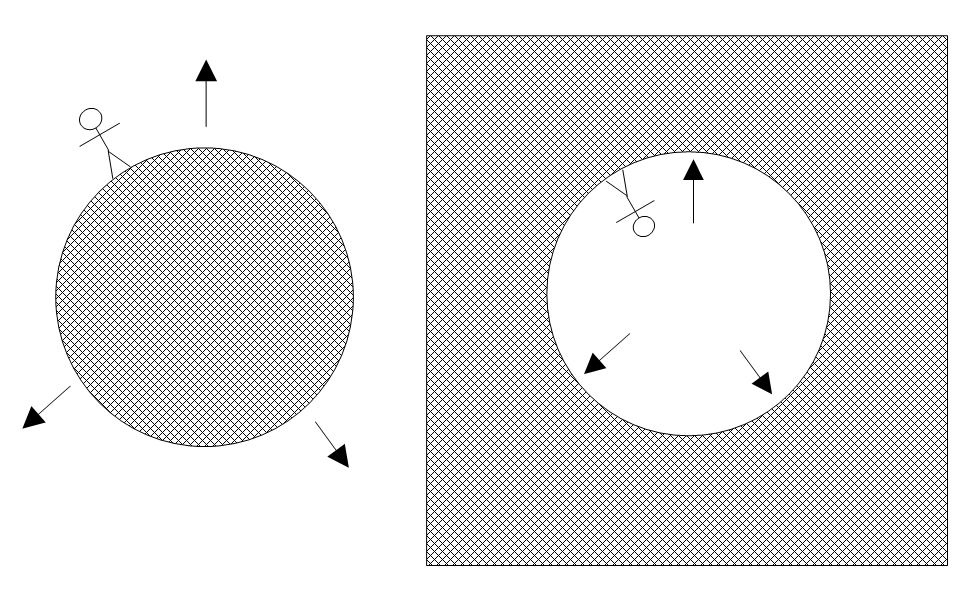In 1929, the astronomer Hubble observed that all the stars and galaxies were speeding away from us, so our universe is expanding everywhere. But if so, why is light from just after the big bang still all around us today, as cosmic microwave background? If the early light exploded outwards, shouldn’t it be at the edge of the universe not here? Current physics doesn’t explain this, but space as an expanding surface does (2.2.5).

A hypersphere surface has three dimensions like our space and no edges like a balloon surface, so it lets our space expand everywhere at once, not just at an edge. Yet while a balloon expanding thins out, our space hasn’t changed in billions of years. This suggests that we are on the inside surface of expanding bubble, not the outside of a stand-alone balloon (Figure 2.11). The surface of a bubble in a liquid doesn’t thin out as it expands because its surface comes from the liquid, not itself. It still has no center or edge, so any waves on it will wrap around to end up everywhere. Hence, light from long ago is still all around us, as cosmic microwave radiation. It also answers questions like:
- What is space expanding into? It is expanding into the bulk around it.
- Does space end? No, a bubble surface has no end.
- Where is space expanding? Everywhere, just as a bubble surface expands everywhere at once.
- How does new space arise? As the bubble expands, new space comes from the bulk around it.
- Are we expanding too? No, objects on a bubble surface don’t expand as the bubble does.
Space as an expanding bubble surface is homogenous but not continuous, expanding but not exploding, never-ending but not infinite, and curved not flat. Instead of hosting particles in space, it only hosts waves on space, so our universe is built from waves not particles.